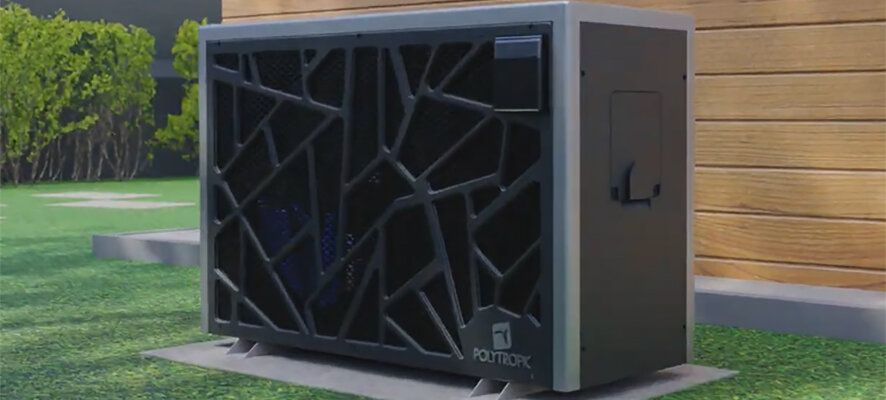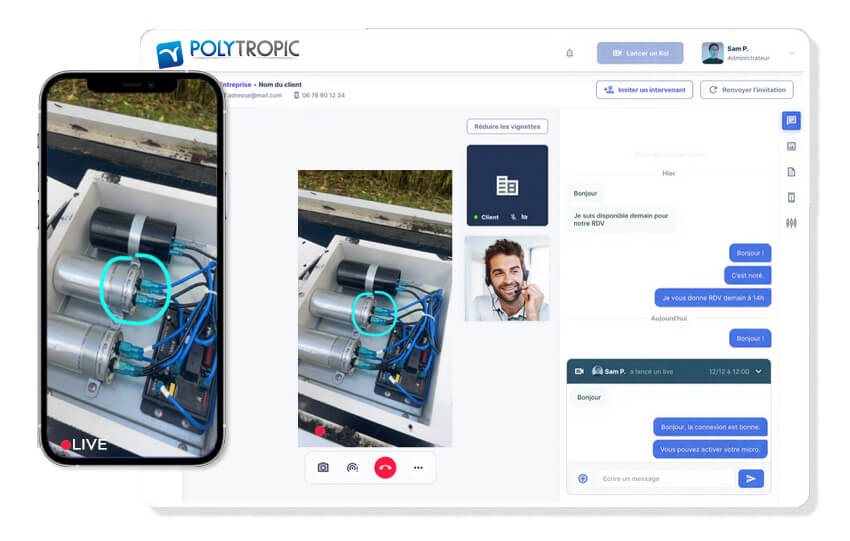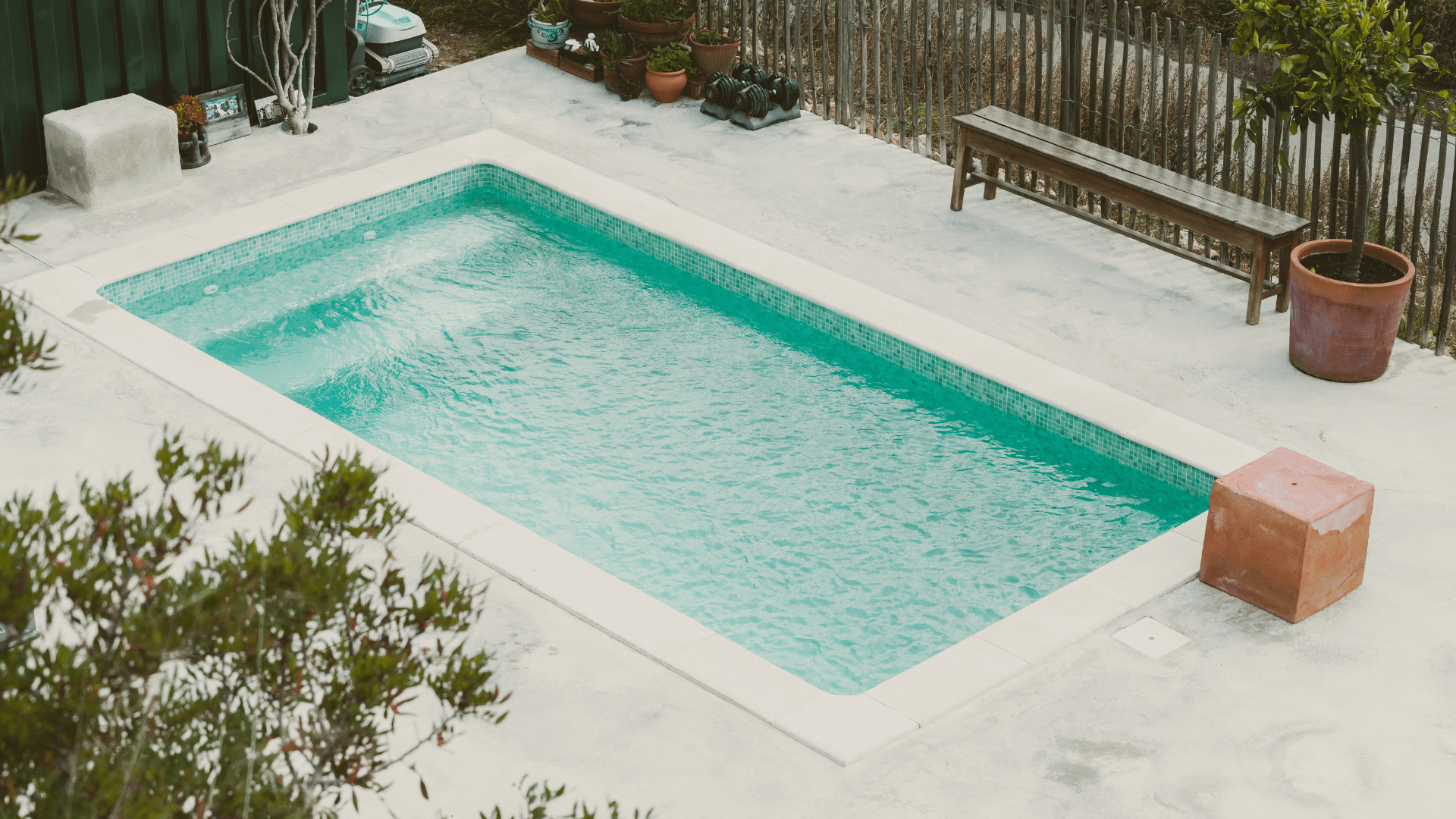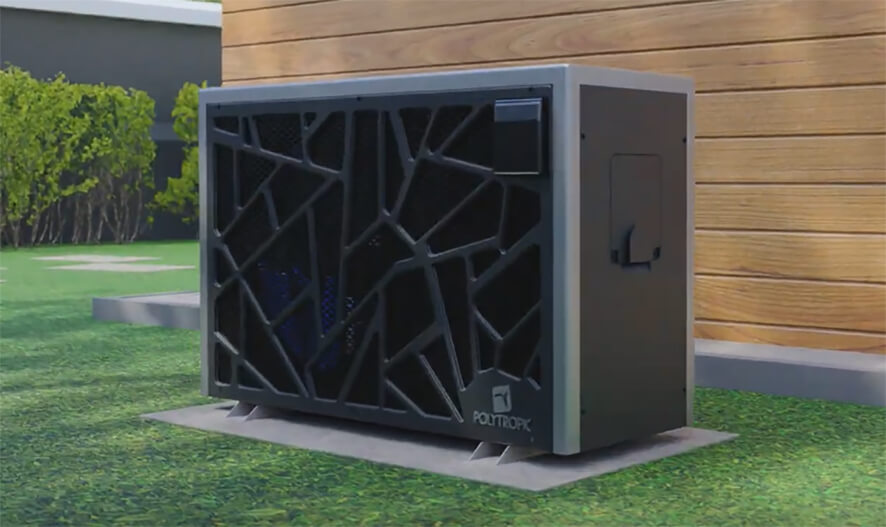The pool heat pump: how does it work?

The pool heat pump has established itself as the best option for heating pool water, but how does a heat pump work?
Polytropic has compiled everything you need to know about pool components and operation.
How a pool heat pump works
Heat exchange:
The operation of a heat pump may seem complicated, but it’s actually quite simple. In simple terms, the concept consists of recovering heat from the air and transferring it to the pool water. By seeking to capture heat from the outside air, we are in fact seeking to capture the calories present in the air. The hotter it is, the more calories the air contains.
The refrigerant :
To capture the calories in the air, the heat pump uses a refrigerant. The refrigerant is a fluid that enables a refrigeration cycle to take place. The fluid has the ability to absorb heat from the air when its temperature and pressure are low, and to release heat when its temperature and pressure rise.
Heating a swimming pool: The 4 stages of heat pump operation
More concretely, to implement a refrigeration cycle, we place the fluid in a closed circuit called the refrigeration circuit. This cycle can be divided into 4 elements, each constituting 1 stage in the fluid’s journey through the refrigerant circuit: the air exchanger, the compressor, the condenser and the expansion valve.
1 – The evaporator or air exchanger :
Its function, as the name suggests, is to exchange air. When the fluid passes through the exchanger, it is in a liquid state (low pressure and low temperature). The fan then circulates air over the air exchanger, which captures the heat. This causes the fluid to heat up and become gaseous. It is this step that explains why the air blown by the heat pump is cold: it is in fact 10 to 12°C colder than the ambient air, having lost calories.
2- The compressor :
At this stage, the gaseous fluid passes through the compressor. The compressor, as its name suggests, compresses the gaseous fluid so that it rises in pressure.
3- The water exchanger
The high-pressure gaseous fluid then enters the titanium exchanger. Its function is to transfer the heat recovered by the fluid to the pool water. The water circulates around the spiral of the titanium exchanger, recovering heat from the fluid. This heat exchange produces the opposite effect for the fluid, which loses its calories and cools, returning to a liquid state and dropping in pressure.
4- The regulator
Finally, the liquid fluid enters the expansion valve, which lowers its pressure once again to capture as many calories as possible when it passes through the air exchanger.
Cooling the pool:
If required, a heat pump can also cool pool water. To do this, the heat pump is equipped with a 4-way valve that reverses the direction of fluid circulation in the refrigerant circuit. The air exchanger then transfers its heat to the air, lowering the temperature and pressure of the refrigerant. In the titanium exchanger, the refrigerant absorbs the heat from the water, lowering its temperature.
Defrosting :
When the temperature drops, ice can form on the evaporator, blocking the flow of air. To remedy this, the compressor raises the pressure and therefore the temperature of the refrigerant. The hot fluid then passes through the evaporator to melt the ice.
Factors influencing the performance of a pool heat pump
Outside temperature: As explained above, the warmer the air, the more calories it contains. That’s why when temperatures drop, the heat pump’s performance is affected.
Uncovered pool: A pool that isn’t covered at night loses its calories through direct contact with the air. Not covering your pool is like heating your house with the windows open.
Heat pump sizing: A poorly sized heat pump won’t be able to handle enough water volume, resulting in a slow temperature rise or even failure to reach the set temperature.
The location of the heat pump: The location of the heat pump has a direct impact on its performance. It is important that the air captured by the heat exchanger is not the air it has just rejected. If this is the case, the heat pump will as
La technologie Inverter, performances mais pas seulement !
All Polytropic heat pumps are equipped with Inverter technology.
Inverter heat pumps, unlike traditional On/Off models, offer many advantages:
- Energy efficiency and savings: automatically adjusting their power output according to actual pool heating requirements, they can modulate their operating speed to adapt to temperature variations. This optimizes energy efficiency and reduces electricity consumption.
- They maintain a more stable and constant pool water temperature. They avoid sudden temperature fluctuations, so you can enjoy optimum comfort when swimming.
- Thanks to their smooth operation and ability to avoid frequent start-ups and shutdowns, inverter heat pumps are less subject to component wear and fatigue, which can extend their overall lifespan.
- Inverter heat pumps are generally quieter than conventional models. Their low-speed operation helps reduce noise levels, allowing you to enjoy a quieter pool environment.



